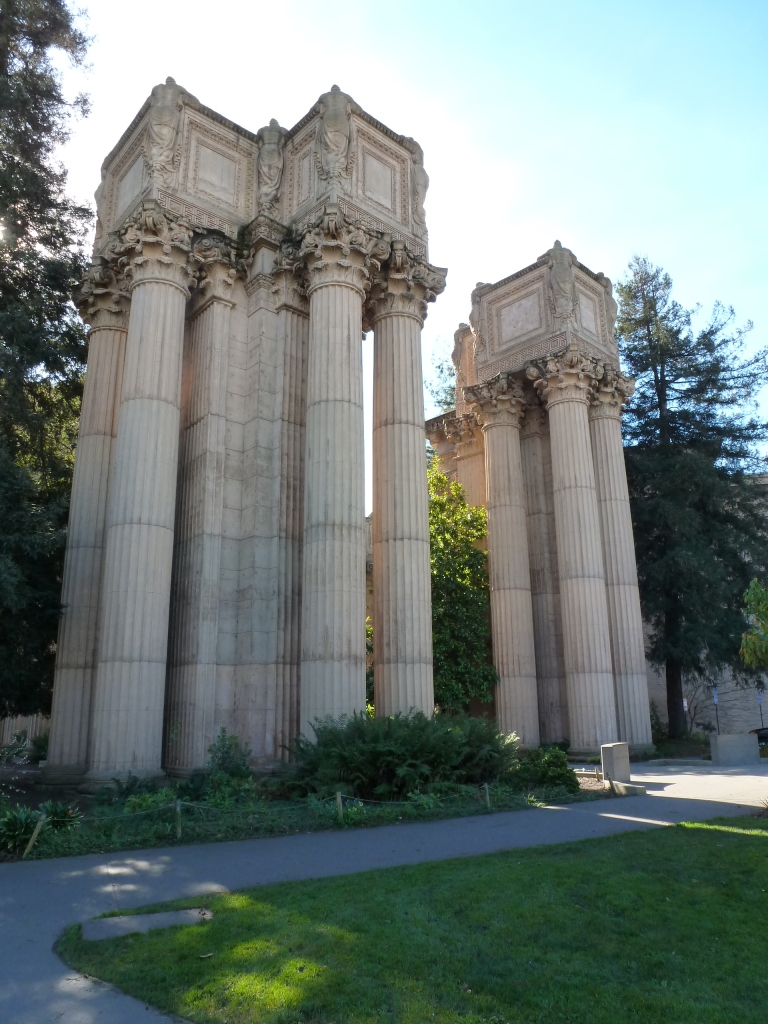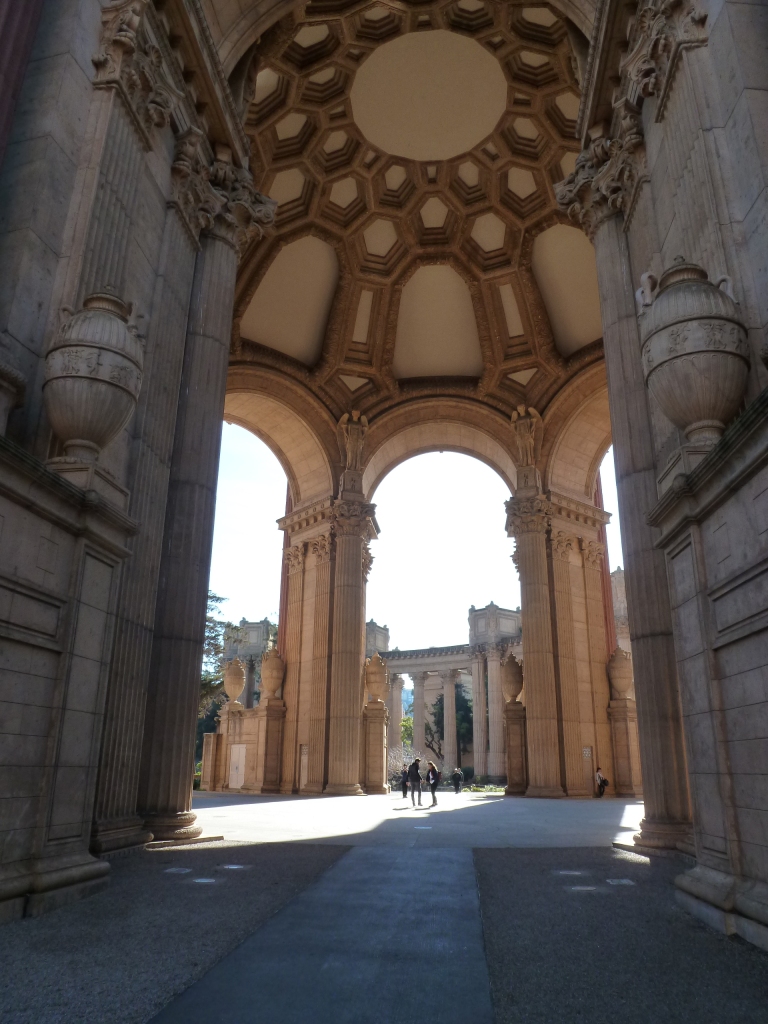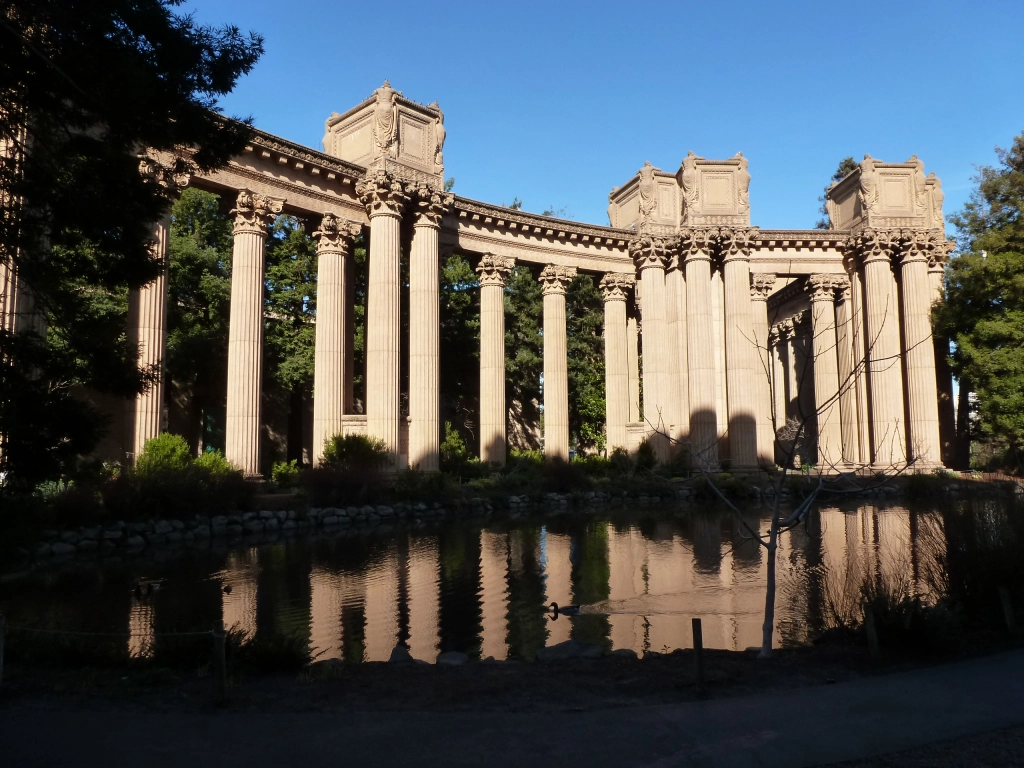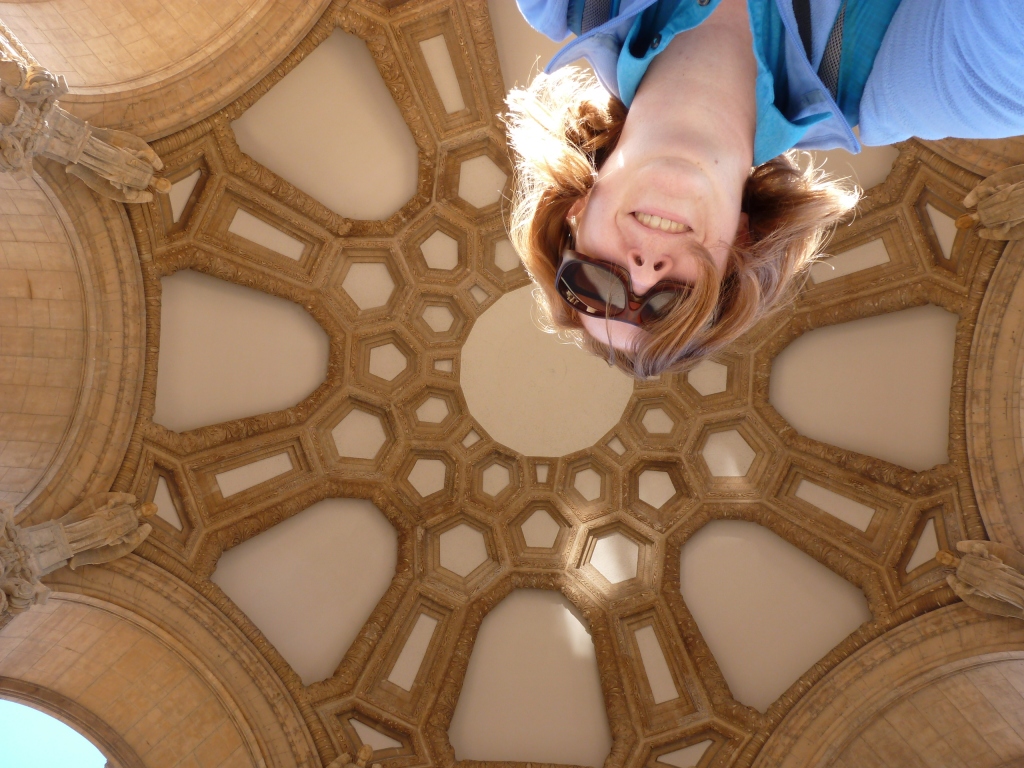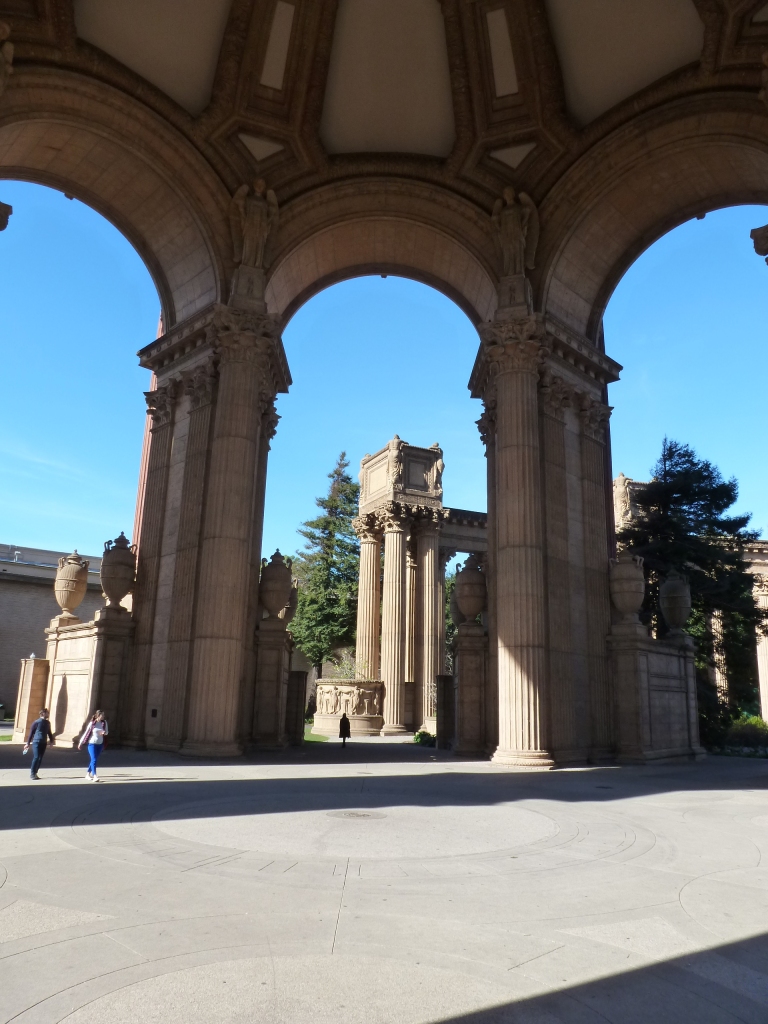
As a child, I was a fan of Laura Ingalls Wilder (author and heroine of the Little House on the Prairie series). I read all of her books, biographies about her, the books about her daughter, and as they began to be released the books about her mother, grandmother, and great grandmother. I also researched her family tree and found her ancestors back to the time of Henry VIII.
I no longer remember the exact order of events. When I was 12 (almost on my birthday), we moved to California. Either before or after that event, I read Laura Ingalls Wilder’s book West from Home, which are letters to her husband written on a visit to her daughter, a reporter in San Francisco, in 1915. Because Laura had visited the 1915 Panama-Pacific Exposition (World’s Fair) in San Francisco, I wanted to go visit what was left of it. I never got the chance while I lived in California. Years later, I finally got there.
Sitting by the lagoon of the Palace of Fine Arts was very peaceful, with the small fountain splashing and birds chirping and cawing. As I sat there enjoying the scene, there was a moment when I could almost picture Laura Ingalls Wilder and other women of the 1910s in their multi-layer dresses, hats or bonnets, and gloves strolling past in a promenade and gazing with wonder at the sights around them.
The Palace of Fine Arts was of a scale to inspire awe and intimidation. It was far more massive and taller than I had imagined. Walking underneath the rotunda, I felt insignificant. Are such large structures built to show us the insignificance of humanity? And yet, they are designed and constructed by humans, which means we create what makes us feel our own insignificance.

